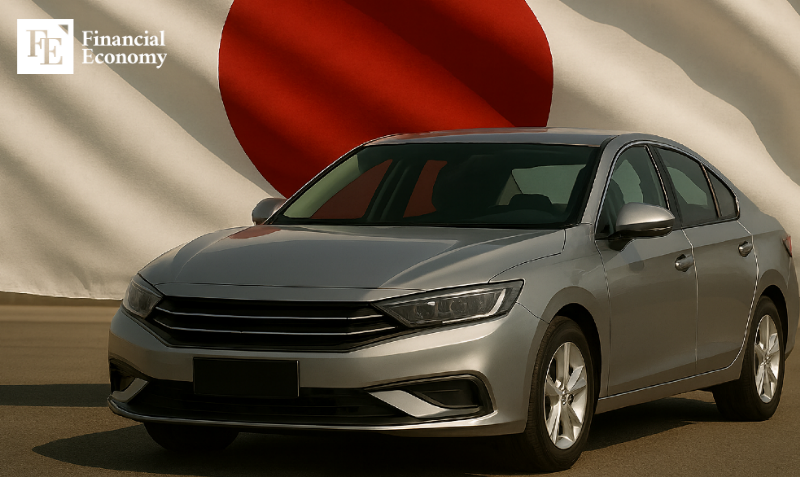Japanese Automakers Hit by Trump’s Tariff Shock Begin Passing Costs to U.S. Consumers
Input
Modified
Shift from Export Price Cuts to Markups Price Hikes by Toyota and Subaru Inability to Absorb Tariff Burden without Eroding Profitability

Toyota, Subaru and other Japanese automakers have begun raising prices in the U.S. market, shifting the burden of tariffs imposed by the Trump administration directly onto American consumers. While overall shipments to the U.S. fell sharply in July, export unit prices rebounded, signaling a decisive move to pass on tariff costs. With major players including Toyota seeing earnings hammered by higher duties, price adjustments are becoming unavoidable.
July Export Prices to the U.S. Rise by $270 per Vehicle
According to preliminary July trade statistics released by Japan’s Ministry of Finance on the 20th, Japan’s exports to the U.S. dropped 10.1% from a year earlier to $116 billion. Automobiles, which account for about one-third of total exports to the U.S., plummeted 28.4% to $28.3 billion, with export volume down 3.2% to 123,531 units.
By contrast, unit export prices rose. The average price of Japanese car exports to the U.S. in July stood at $23,000, up $270 from June’s $22,730, halting a steady decline that had persisted since January. A similar trend appeared in the Bank of Japan’s Corporate Goods Price Index, where the export price of passenger cars to North America rose 2.2 points in July from June, the first month-on-month increase in six months. Prices based on contract currencies—less affected by exchange rate swings—also climbed for the first time in five months, suggesting the downturn has bottomed out.
Industry sources said Toyota raised its average U.S. vehicle price by $270 in July, while Subaru, which derives roughly 70% of its global sales from the U.S., also increased the prices of certain models in June. Although Tokyo and Washington agreed last month to lower the tariff on Japanese cars from 27.5% to 15% (2.5% base rate plus 12.5% additional levy), no implementation date has been set.

Limits of the “Absorption Strategy”
Until now, Japanese automakers had absorbed tariff costs internally, holding off on raising prices in hopes that bilateral negotiations might ease the burden and that pre-secured inventory could provide temporary relief. But with talks collapsing and tariff rates finalized, further delay has become impossible.
Contrary to predictions that tariffs would inflict a devastating economic shock on the U.S., the fallout has so far been contained. Automakers had restrained from price hikes, absorbing the cost to prevent customer attrition. The industry faces two difficult choices: raise sticker prices or shift production to the U.S.—neither feasible in the short term. Price hikes risk eroding sales and drawing Trump’s ire, while relocation requires time and capital. As a result, most manufacturers opted for a strategy of endurance rather than passing on costs.
Automobile Price Hikes Add Upward Pressure on U.S. Inflation
Now, with earnings severely hit, Japanese automakers have no choice but to pass on tariffs. Toyota has borne the brunt: its second-quarter revenue reached $872 billion, up 3.5% year-on-year, but operating profit fell 10.9% to $78 billion. The company estimates that tariff-related losses amounted to $31 billion in the quarter alone, with full-year losses projected at $95 billion.
Other automakers face a similar predicament. Goldman Sachs estimates that if tariffs are fully applied to passenger cars, operating profits at seven leading manufacturers including Toyota, Honda, and Nissan would collectively fall by about $129 billion.
The pricing decisions of Japanese automakers are further reinforced by the stance of competitors such as South Korea and Germany, whose companies also failed to secure meaningful concessions from Washington, minimizing the risk of competitive disadvantage.
This trend is expected to ripple through the U.S. economy. Automobiles are a key component of the Consumer Price Index, meaning higher vehicle prices will feed directly into inflation. If tariffs continue to be passed on, inflationary pressure will intensify, potentially constraining the Federal Reserve’s policy options. While expectations for rate cuts have recently mounted, auto-driven inflation could limit the Fed’s room for maneuver, adding a fresh layer of uncertainty to global financial markets, economists warn.





















